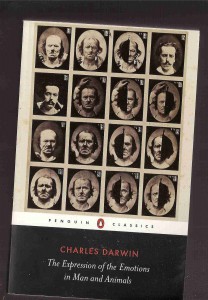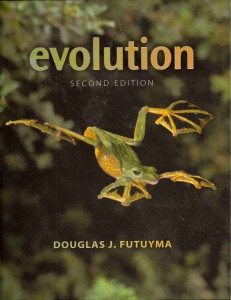
For some months now, I have had stipend time, to write a book on gender equality theory. That is, not just gender equality in practice, but as a theory matter also. A matter to be researched, studied, identified – far better than today.
Why? I look at gender equality as a subject on its own, beyond gender. I look at the main traditions in research regarding gender inequality, compared to new material on increasing equality. What works, what not. Wheat and chaff.
I also discuss theory issues like, when is a gender power model appropriate, when not. Is gender equality something that happens after a lot of social development and democratization – or rather, a causal factor or predictor variable, acting on its own.
The book will hopefully be published first in Norwegian (2012 or 13) as Likestillingsteori, and then in a revised and translated version ca one year later, as Gender equality theory.

I am one of the contributors to the Women’s health days event in Oslo 1-2 April. See
http://www.forskningsradet.no/no/Arrangement/Kvinnehelsedagene_2011/1253964755410
My paper is titled Gender, violence and health – do we need a gender perspective in health and medicine? (in Norwegian, Kjønn, vold og helse – trenger vi et kjønnsperspektiv på helse og medisin?v/Øystein Gullvåg Holter, professor i maskulinitets- og likestillingsforskning, UiO)
The seminar starts Friday 1st of April at 9, Oslo kongressenter, Youngstorget
My introduction, ca 10, will be focused on one example of why a gender perspective is needed – violence against children. New results show that violence against children is mainly performed by the adult who dominates the decision-making in the home.
Gender equal decision making among adults in families lowers the chance of violence against children perhaps as much as two thirds.
This is a major historical research result – in my view, and I will highlight it in my lecture.

The gender equality survey in Norway 2007 showed that children growing up in gender-equal homes, where the parents decided things equally, were less exposed to violence and physical punishment, compared to father- or mother-dominated homes.
This is a major new finding, and I regard it as one of the most important findings of my research, stretching over many years from 1980 to today.
The 2007 representative survey data maps adults retrospective experiences, growing up ca 1940-2000, and seems to be a clear and solid data source, for example, reported in a very similar way by men and women. Compared to violence in adult life relationships, also included in the survey, the data on childhood experiences seems more robust, less prone to “mission shift” or normative reinterpretation, although it is retrospective. If bad memory or rescripting due to age was substantial, we would expect disparate reports from different age groups, but instead, that data gives a coherent picture. The age groups tell of gradually reduced violence, like other sources, and also, they have much the same basis for regarding something as violence, as indicated by e g health correlations. For example, it is not the case, in terms of health outcomes, that violence in childhood reported by the young is any less serious than the violence reported by the old part of the sample. A variety of tests point in the same direction, the childhood gender equality and violence reporting is realistic.
Gender equality in the socialization agency, the family, or the parental group, in this study, reduces the chance of violence against children substantially, almost two thirds. In father-dominated homes, 27 percent experienced violence or punishment, in mother-dominated homes 17 percent, in gender-equal homes 10 percent. The main perpetrator, the violent or punishing person, also mapped in the survey, and in father-dominated homes was mainly the father, in mother-dominated homes mainly the mother, in equal homes more balanced but more often the father.
This main pattern was not much affected by gender, age, education, whether the parents were divorced, or mobbing in the socialization environment. Gender equality emerged as a strong independent factor, regarding violence against children, according to the survey results.
The main result was described in the report, see Holter etc: Gender equality and quality of life, p 239. but it took some time for the message to sink in, and this is a case that deserves better promotion. Further analyses of the survey results have confirmed the independent character of the gender equality decision-making variable. Its strong effect and similar patterning across other known variables, like social class related variables, family breakup, and social problems (mobbing in childhood environment) is remarkable.
These result are of historical importance. They should be better tested and established, can they be repeated in Norway, are they international, do they represent a wide trend? If they turn out to be right, through broader testing, they demand a rethinking, or even a paradigm change, in many disciplines.

In my March 15 blog post on the Japan catastrophe – earthquake, tsunami and nuclear fallout – I commented that the problems are also due to lacking gender equality. What does that mean?
We might start by considering plant eaters and meat eaters (Japanese terms), or soft and strong men (Norwegian terms), democracy and authoritarianism.
Historically, Japan managed to adapt successfully to Western imperialism only by regenerating authoritarian tendencies, leading to the axis power alliance and imperialism in World War II. Lack of attention to gender equality was part of the limited development of democracy in post-war Japan.
Women were not much present, it seems, in Japanese decisions leading to the lacking defence against the three main parts of the catastrophe (earthquake, tsunami, nuclear). The basic issue is not just gender balance, but gender interest balance. It is the reproductive sphere that is hurt, mainly, by the damages in today’s Japan, although production is diminished too. The main victim is civil society and human lives.
Perhaps Japan needs an ideas and behaviours revolution, learning from Egypt and Tunis, extending democracy peacefully? Japan needs to move beyond its authoritarian inheritance and conformism, leading e g to the ignorance of the warnings from outspoken researchers like the seismologist Ishibashi Katsuhiko.
In many countries of the world, new and old roles for men are in opposition, a change behind the scenes. In Japan, it has been called a struggle between “plant eaters” and “meat eaters”, in Norway, a struggle between “soft” and “hard” men. All over the world, there is a need for change, and also, for using tradition, for making use of the stability of culture, but no longer for authority, for democracy instead.

On my reading list – and now – on my table. More to follow. Penguin Classics 2009, from the second edition 1890.
Regarding Darwin, interpretation is clearly needed, ability to sort wheat from chaff. For example, he has a lot of racist comments in his work on sexual selection (also recieved, some of it read). One cannot take this on face value, it would resemble taking the old testament on face value in creationism. In Darwin as in other cases the interesting thing is the sense of science beyond the sentiments of the day – that were present there (as in the writings of e g Marx and Freud). This is what challenges the reader, and makes for a captivating story, even today.

This historical novel, published by Spartacus, 2009, has been applauded by e g professor Kåre Lunden (“a picture of life in the 13th century”). Review to follow.

This is a good conventional take on science history, with little problematization of gender or who was heard or not heard.
Very well written “within the frame”, not a good guide to the framing.
– Preliminary report, one third read, March 2011

This is one of the few books I have recieved in the last year that I have cast into the category “a difficult read”. This is not a common category in my case, but some books end there.
Another case is Elliot Sober: Evidence and evolution, 2008. In both cases I wonder, is it necessary to present the arguments in such a convoluted and difficult way. I tend to put them down, after reading some sentences. Although both authors have important things on their mind.
This may be just my limited reception, I will get back, but it remains my early impression of these works.Norrie, for example, seems unenlightened considering gender studies. On page 132 he restates his general position, discussing how Bhaskar’s philosophy coincides with that of Habermas, figuring “equality, liberty and fraternity” as main agent – with no further reflection concerning the possibly quite slanted ideal of “fraternity”, although he does mention that “feminists” have had something to say here .

Douglas J. Futuyma’s Evolution is an impressive work on many accounts, well provided pedagogically with colour illustrations and examples, interesting to read.
The research sensibility and evaluation seems good. Mainly, this book has a lot of new information, conveniently ordered, and often (but not always) well explained. More to follow.




